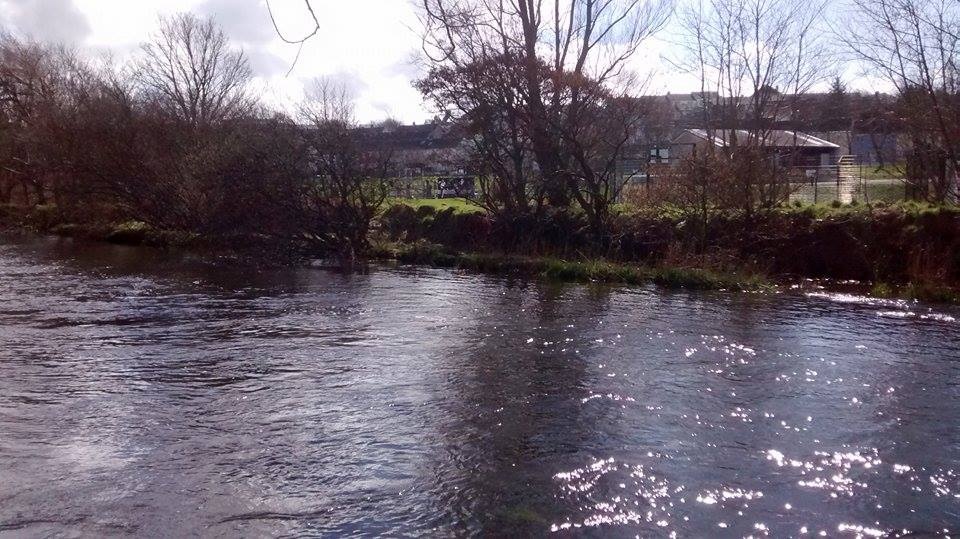
Uploaded on 2016-04-23 by KristiyanPeev
1.Provisioning Services- The river contributes a lot to the the communities down stream. From clean water and electricity (AMEC 2014:152) http ://www.dwrcymru.com/_library/2014/WR/SEA%20Environmental%20Report_Final_AUGUST.pdf to wood for fuel. The picture below is an example of drift wood from the river used as bonfire fuel. ![Bonfire wood fuel][1] 1. Regulating Services The vegetation around the banks of the river catchment area provides multiple benefits to human well-being. The flowering plants give pollinators, pathways for feeding and breeding (picture 2), linking the agricultural fields with the city.`enter code here` ![Flowering plant][2] Indeed these little arthropods are quite important, they provide us with economic benefits ranging in the 100's of billions of USD worldwide and are a key indicator of biodiversity and contributors to it http://www.unep.org/maweb/documents/document.354.aspx.pdf (Greening the economy). The trees around the river also provide many benefits. One of them is flood prevention and control. A study from Mid-Wales noted that tree lined river banks store 67 times more rain water than grass covered ones (Marshal et al cited in Monbiot 2015)http://www.monbiot.com/2015/12/08/a-storm-of-ignorance/. In general urban trees are quite beneficial to society, Natural Resources Wales estimates that the annual economic benefit of the trees of Aberystwyth is more than 3.3 million GBP (2014:27)https://naturalresources.wales/media/4123/tree-cover-in-wales-towns-and-cities-2014-study.pdf ![Trees along the bank of the river][3] Supporting services: The river in general is a powerful cultural metaphor for the flow of time and its cycles. One of the most important cycles is the nutrient cycle. (Tim Ingold 1993:) http://www.humanidades.com.ar/cultura/wp-content/uploads/2015/11/ingold_temporalityoflandscape.pdf This is the cycle of essential nutrients from the environment to plants and animals (humans included) and back again (SSW 2012) http://www.sswm.info/category/concept/nutrient-cycle . They are base nutrients mostly carbon oxygen and hydrogen, macro nutriets nitrogen, phosphorus, potasium, calcium etc.. and micro nutrients such as iron and zink. Countless communities depend on the nutrient cycle nutrients, from the local farms that produce much of the produce sold in the shops and small retailers, to the urban wild life. (Welsh Water ) http://www.dwrcymru.com/_library/2014/WR/SEA%20Environmental%20Report_Final_AUGUST.pdf Cultural Services: As the Millenium Ecosystems Assesment Synthesis report notes 'Many of the actions of humans concerning nature are done not because of any perceived benefit but due to respect for the intrinsic worth of the organisms and environment'. Indeed some like Harvard biologist E.O Wilson coined the term biophilia, explaining that bonding with nature that is alive – birds, animals, insects, and human beings increases love for the earth, sense of awe, and desire to protect the earth (cited in http://www.livablecities.org/articles/livable-communities-through-urban-forestry-part-1) . At every age, we all feel more alive and enjoy life more when we are in touch with other living things. ![Mother with her children feeding a swan][4] Finally Natural Resources Wales has been trying to implement the whole ecosystem's approach to [1]: https://edxuploads.s3.amazonaws.com/14609190424330592.jpg [2]: https://edxuploads.s3.amazonaws.com/14609202526627673.jpg [3]: https://edxuploads.s3.amazonaws.com/1460926188120257.jpg [4]: https://edxuploads.s3.amazonaws.com/14609995711621404.jpg